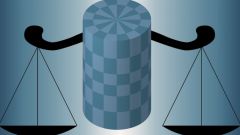Instruction
1
The formula for calculating body weight has the form: P=m*g, where P - body weight, m – body mass, g – acceleration of free fall. The volume in this formula does not, then it should be associated with the values listed in the formula, for example, ground. Output the acceleration of free fall is impossible, as it is a constant value equal to 9.8 N/kg (Newton, divided by kilograms).The volume and mass of the body United other physical formula: V= m /ρ where m is the mass and V is the body volume, ρ is the density of matter constant table value for specific substances. Write it in convenient form: m = V*ρ
2
The substitute formula mass (m = V*ρ) to the formula of body weight (P=m*g), we obtain a new formula for calculating the weight of the said body: P=V*ρ*g. That was the estimated weight formula of the body through its volume. In it the acceleration of gravity, g, and density, ρ, are constant (only the density of the body). Began to see a direct correlation between volume and body weight. The greater the body volume, the greater its weight.
3
An example of solving the problem. Find the weight of a glass ball with a volume of 0.2 m^3 (cubic meters).
Solution. In this condition, three known quantities: volume (V=0.2 m^3), the acceleration of gravity (9.8 N/kg) and the density, which is defined in the table according to the substance from which the body is (the density of the glass ρ = 2500 kg/ m^3). P=V*ρ*g = 0.2 m^3*2,500 kg/ m^3*9.8 N/kg = 4900 N. When working with units of measure: reduce the cubic meters and kilograms, are Newtons – unit of force. The weight of the body is a force so is measured in Newtons.
Solution. In this condition, three known quantities: volume (V=0.2 m^3), the acceleration of gravity (9.8 N/kg) and the density, which is defined in the table according to the substance from which the body is (the density of the glass ρ = 2500 kg/ m^3). P=V*ρ*g = 0.2 m^3*2,500 kg/ m^3*9.8 N/kg = 4900 N. When working with units of measure: reduce the cubic meters and kilograms, are Newtons – unit of force. The weight of the body is a force so is measured in Newtons.
Note
Body weight and body mass are two different physical quantities with different characteristics.
Useful advice
Made using the rounded value of the acceleration of gravity, it is equal to 10 N/kg.
A table of densities can be found in any textbook of the seventh grade or as a physical book.
A table of densities can be found in any textbook of the seventh grade or as a physical book.








